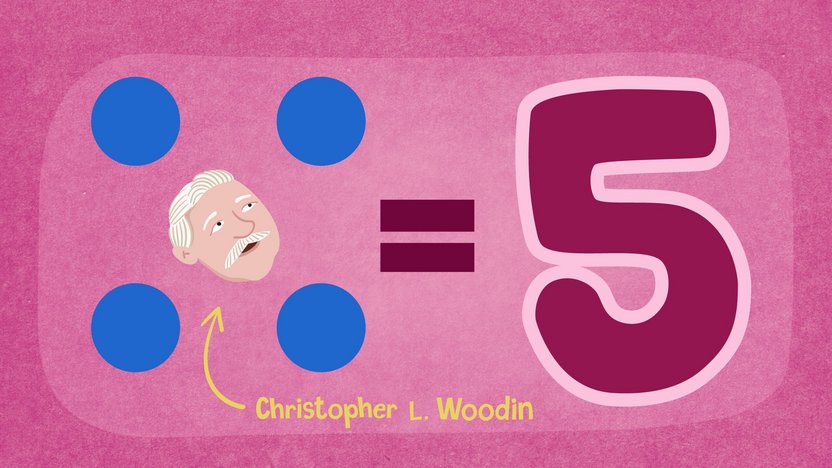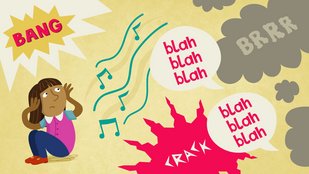Dyscalculia and Number Sense

By Christopher L. Woodin, Ed.M, Author and Director of WoodinMath.com.
What is Dyscalculia?
Developmental dyscalculia is a learning disability that affects the acquisition of knowledge about numbers and arithmetic. Developmental dyscalculia is a brain-based disorder like other learning disabilities that is present from birth. Its prevalence in the school population is about 5-6%.
What is Number Sense?
Number Sense is the ability to understand quantities like more or less, larger and smaller, understanding the order and sequence of numbers, like 1st, 2nd, 3rd, and that symbols represent quantities (2 means two).

Dyscalculia Definition
Developmental Dyscalculia, like dyslexia and dysgraphia, is classified as a Specific Learning Disorder with impairment in mathematics in DSM-V.
A persistent difficulty learning academic skills for at least 6 months, despite intervention targeting the areas of difficulty. In number sense, fact and calculation, and in mathematical reasoning – The academic and learning difficulties occur in the absence of:
- Intellectual Disabilities
- Visual or hearing impairments
- Mental disorders (e.g. depression, anxiety, etc.)
- Neurological disorders
- Psycho-social difficulty
- Language differences
- Lack of access to adequate instruction
American Psychiatric Association. (2013). Diagnostic and statistical manual of mental disorders (5th ed.). Arlington, VA
Common definitions of dyslexia and dyscalculia relate to effects - underperformance in related academic performance - rather than causes. These definitions can help parents to garner additional resources, but do not define remedial academic programs.
What is the cause of (developmental) dyscalculia?
The research involved with determining the cause(s) of dyscalculia is evolving. Prominent hypotheses focus on a core deficit in the ability to process, compare, and represent quantities. Many researchers’ studies identify processes involving the intraparietal sulcus (IPS) of the dyscalculic brain as having a negative impact on an individual’s ability to accurately and swiftly represent the number of objects in a set, an ability that underpins learning arithmetic.
What are the effects of dyscalculia?
The core deficits that may be detected as early as 5 ½ years of age predict performance in the academic pursuit of math competency in school. Studies have documented that students performing in the lowest tier with regard to tests measuring their core capacity to process quantities perform poorly in math in comparison to their peers across grade levels at least through elementary school.
Reeve, R., Reynolds, F., Humberstone, J., & Butterworth, B. (2012). Stability and change in markers of core numerical competencies. Journal of Experimental Psychology: General, 141(4), 649-666. doi:10.1037/a0027520
“Men and women with poor numeracy skills have poorer educational potential, earn less, and are more likely to be unemployed, in trouble with the law, and more likely to be depressed and sick.”
Math Disability and Dyscalculia: One and the Same, or Not?
Butterworth, Brian, Powerpoint Presentation, The Dyslexia Foundation, Boston, 2014 Slide 9
How are the core deficits assessed?
Core deficits may be detected with tests that do not involve arithmetic, as well as single-digit addition. These tests involve identifying quantities of dots, and comparing two clusters of dots to determine the greater quantity.
How is dyscalculia treated?
Early intervention addresses the core deficit of developing a robust conceptualization of quantities so that these quantities may be compared to develop number sense. Targeted strategies at an early age may promote the development of number sense, necessary to acquire numeracy skills needed to benefit from a normal course of elementary instruction.
- Number sense is attained by comparing quantities, then linking and storing these comparisons with language-based expression.
- This process evolves over time in both magnitude (1-5… 6-10… 11-20…) and complexity with regard to how the quantity is perceived, processed, represented, and expressed. Instruction should progress from the manipulation of concrete materials arranged and decomposed using familiar visual patterns “:•:” to semi-concrete diagrams of these patterns, to Arabic symbols “5”, and result in oral and written expression of related addition and subtraction facts. Students perceive familiar “canonical” presentations of dot patterns faster and more accurately than random or linear presentations. Furthermore, if a complex pattern can be broken down into small canonical patterns, then participants follow a partition and add strategy.
Wender, K. F., & Rothkegel, R. (2000). Subitizing and its subprocesses. Psychological Research, 64(2), 81–92. https://doi.org/10.1007/s00426000002

- Students learned to identify patterns of dots and name their quantity with ample exposure and training, and after receiving training, these students performed better in school at arithmetic that was not directly related to the training.
Subitizing and Visual Counting in Children with Problems in Acquiring Basic Arithmetic Skills. Fischer B, Gebhardt C, Hartnegg K. College of Optometrists in Vision Development. 2008:39(1):24-29.
Effects of Daily Practice on Subitizing, Visual Counting, and Basic Arithmetic Skills. Fischer B, Köngeter A, Hartnegg K. College of Optometrists in Vision Development. 2008:39(1):30-34.
The primary cause of an academic deficit may be separate, or a shift from the core deficit toward a number of cognitive metrics with regard to processing, memory systems, executive function, and multimodal integration. These underlying causes, that may be defined through neuropsychological testing, manifest themselves as effects seen in academic areas. Helping a student identify his/her strengths and weaknesses is an important step to developing an effective individualized educational plan of instruction.
- A neuropsychological evaluation should be performed to determine relative strengths and weaknesses, as well as a current mathematical skill base.
- A remediation and instructional plan should be developed in an ongoing diagnostic-prescriptive manner, using methodologies that dovetail with the individual’s cognitive strengths and evolving skill level.
Visit Woodin Math here.


